“The best time to plant a tree was 20 years ago. The second best time is now.”
– Chinese Proverb
So you want to plant a tree, eh?
Well I’m super psyched about that! We definitely need more trees. And the sooner you plant them, the more you get to enjoy them.
But I want us to go through some tree planning and planting basics to make sure you’re doing the right thing for the tree, your property, and for you.
1. Plant at the right time of year
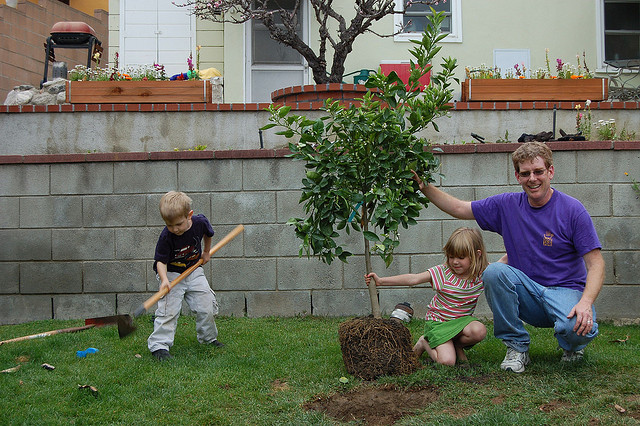
Tree planting requires help!
There are certain times of year that are better for tree planting than others. Without going into detail, the best times are in fall and early spring before leaf-out.
Ok, I have to give at least a little explanation, albeit generalized. In late spring and summer, a tree sends most of its energy upwards into leaf growth, then photosynthesis and reproduction. Mid and late summer in most places is drought prone. Once it begins to cool at the end of the summer and throughout fall, trees will begin to focus on their roots. The fall and winter are times of active root growth. That’s right, trees actually grow during the winter, but we just don’t see it.
Thus, the best time to plant is when the tree won’t be draining its energy from a limited root mass to grow leaves or reproduce. It is best to plant when the tree is focusing on root growth or in its ‘dormancy’ in late winter to early spring as soon as the ground is workable.
2. Know how you’ll get the tree
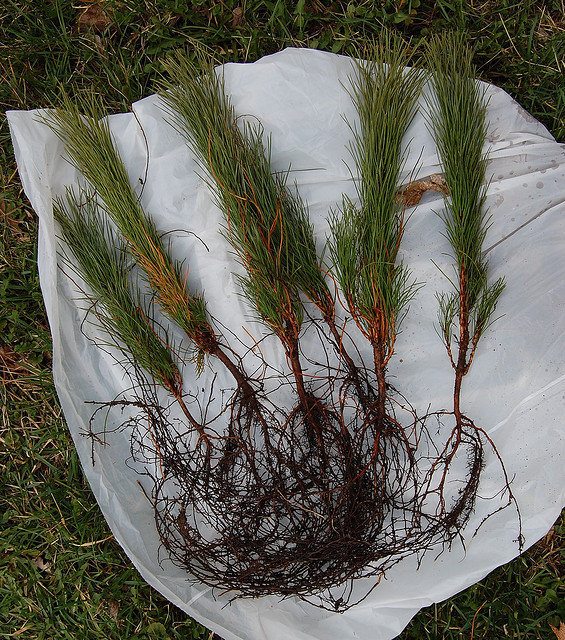
Bare-root trees come small but can establish healthy roots better. And they’re cheaper!
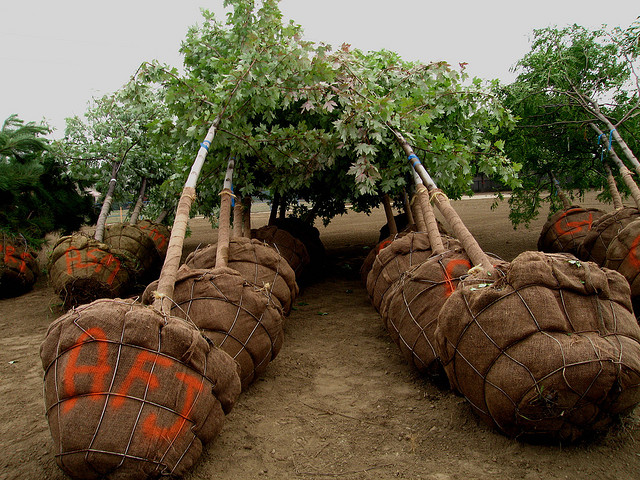
Balled-and-Burlapped trees are a hefty job but get you a bigger tree sooner.
There are a few standard ways that trees generally come: bare-root, potted, or balled-and-burlapped.
There are advantages to each, but here’s the quick rundown:
- Bare-root: This style of tree preparation is generally considered optimal for preservation of the root system. However, there are limitations to bare-root as well. The tree must be in its dormancy during the cold season, or else the tree will not thrive. Bare-root preparations are generally only done for very small 1-2 year old trees. You generally will order these and receive them via mail in mid- to late-winter.
- Potted/Container: This style of tree preparation is popular for nursery stock and generally all you find in large chain stores. The advantage to potted trees is mainly for the supplier rather than the customer, as the root systems are generally severely trimmed before potting and quickly become root-bound within the pot. This can cause some serious problems later in life for the tree. So if you go this route, be sure to take a peek at the roots on the sides of the pot for root-bind. That being said, I have planted several trees from pots with success.
Balled-and-burlapped: This is probably the most common means of packaging and transportation of trees from nurseries. Trees are generally dug up with as much of the root system as possible, wound into a ball, then wrapped with burlap to contain the roots. This style is similarly susceptible to root-binding and overpruning of roots. So it is best if you can get a tree that is recently balled with the largest root mass possible. Of course, cost goes up in accordance with larger root balls and on-demand harvest.
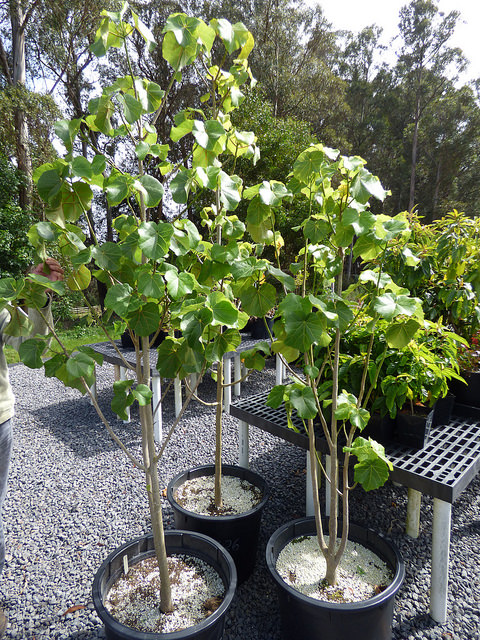
Potted trees can be a convenient option but make sure the roots are healthy.
3. Understand the tree you’re planting
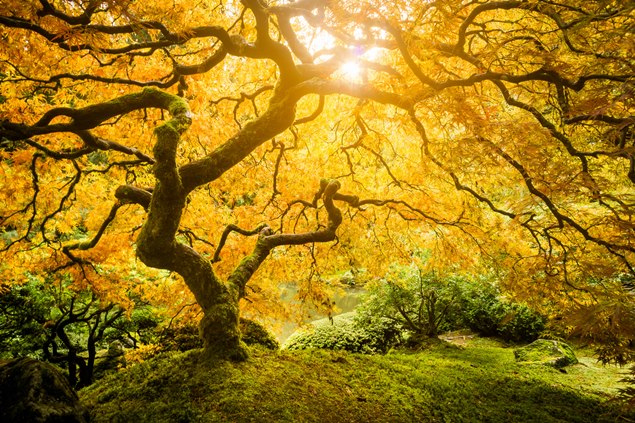
Right Tree + Right Place + Good Planting = Beauty
So you want a Brazilwood tree, native to the Amazon?
It is important to consider the tree you select and its ability to grow in your region and on your immediate property. A good start is on the USDA plants database, which will show you where certain plants are known to grow, native or otherwise. It is easiest to find information if you know the scientific name.
Knowing if the tree is native or has been introduced to your region will provide an indication of whether or not the tree will thrive. A mesquite tree may do very well in Arizona, but will struggle in Kentucky.
And one last thing, make sure your tree isn’t a problem tree. Take for example the Bradford Pear. These trees are incredibly popular, but are prone to disease and are incredibly brittle. Most people end up having to remove these trees within 10-20 years from planting. That may seem like a long way off, but then you’re left with an awkward bare area and a stump.
4. Plan for growth!
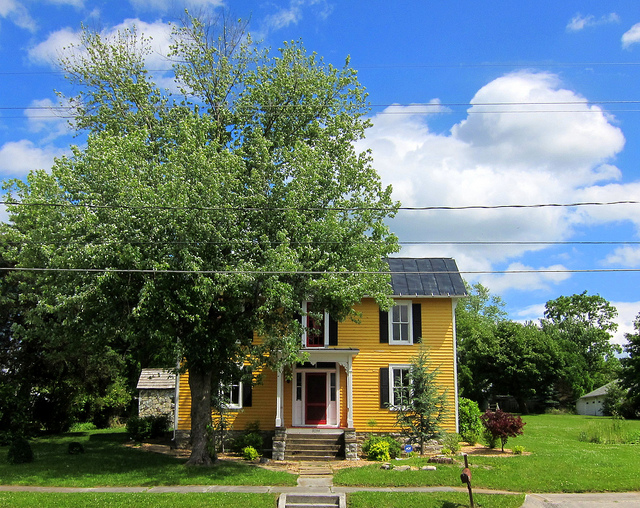
Oops. Too Close to the house.
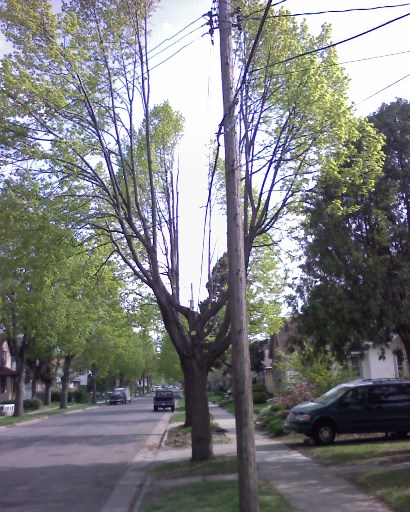
Ack. Too big to put under power lines.
Here’s a surprise – Trees grow bigger once you plant them!
For realsies, though, it is surprising how many people plant trees either too close to a structure, right under power lines, or without thinking of how big they actually get. The house we moved into three years ago had four trees that were 30-35 years old. Every single tree was planted in a problem area! We have had to massively prune each of them to reduce canopy size or avoid wires, and we may end up needing to remove them.
So how do you plan appropriately? First, look up their mature size. Many native eastern woodland trees, for example, grow upwards of 80 feet, with a 50-60 foot spread. Make sure there are no structures within that mature zone.
Just as importantly, the roots may cause problems if a tree is planted too closely to a structure. It is much more difficult to tell the size and pattern of mature root growth, but at least try to look it up. A general rule is that the root zone will be as wide as the canopy. However, some trees go wider, especially as they mature.
The silver maple is another such problem tree. Not only does it have the breakage issues shared by the Bradford Pear, but it also shoots surface roots out much farther than the canopy. These roots tear up sidewalks and foundations all across the eastern US suburbs.
So plan appropriately
5. Know your soil
Not only should you know the regional soil composition, but you should also know the soil makeup on your property. Many suburban and urban areas have altered soils from development and centuries of human disturbance. In urban areas, many properties have unknown deposits or fills underneath the surface.
This knowledge is important because different trees thrive in different types of soil. Some are great in clay soils, some in sandy. Some prefer wet soils, others tolerate drought.
As an example, I have noticed that many old Chicago suburbs have thornless honey locust trees lining most streets. Each tree is given only a tiny square of dirt at the base of the tree, surrounded by pavement. These trees are able to thrive despite such negligence, because they thrive on poor clay soils, fix their own nitrogen, and can tolerate limited surface water availability.
The easiest way to figure this out? Look up your county soil and water conservation district, or local agricultural extension office and ask them about regional soil composition. Specifically, ask them:
- What is your subsoil composition? Clay? Sand? Loam?
- What is the general pH of your soil?
- How deep is your bedrock?
They should be able to provide you a general recommendation for your area. If you want specifics, you can ask them to send you a soil test kit for details. I highly recommend you get a soil test, as soils are often change during construction development.
6. Thinking long term
Let’s face it. Most trees, if planted properly, will outlive us by far. Thus, we need to consider the long term needs of the tree. Sure, you’re great at watering and caring for the tree the first month after you plant it, but what about after that? What about in five years? Ten? What does the future homeowner need to do in fifty years?
It may seem ridiculous to plan that far in advance, but think of it this way: Trees add value to your property when properly planted. Can you buy a 50 year old oak? Sure, and you can drive behind the delivery truck in your Lamborghini (I do it all the time). A mature tree is something that can only be planned with time. This can become a major selling point for your property in the future, or it can become a major hindrance.
So long term needs are:
- Size and obstacle planning, as discussed before
- Long term resource utilization – e.g. enough natural water availability
- Long term pruning or care needs
- Disease resistance
Get these straight, and you’re pretty well set.
Okay, so you’re all set and ready to plant! Making sure your tree is set for success is just as important as the planting and early care of your tree. Now, you’re set to plant!
I’ve put together a super easy guide for properly planting your tree. Check it out below to plant like a pro!
“Society grows great when old men plant trees whose shade they know they shall never sit in.”
– Greek Proverb
Sources:
Gaia’s Garden by Toby Hemmenway
Ready to plant your tree? Get your free copy of The Quick Guide to Tree Planting Like a Pro
Photo Credits: Flickr Matthew Paulson, something.from.nancy, eli sagor, Samuel Bletenholz, Forest and Kim Starr, Brooke Hoyer, NCinDC, bdunnette



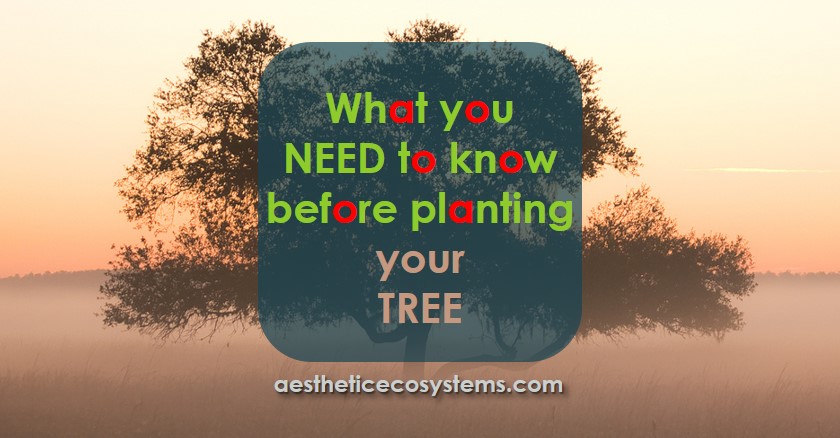









Leave A Comment